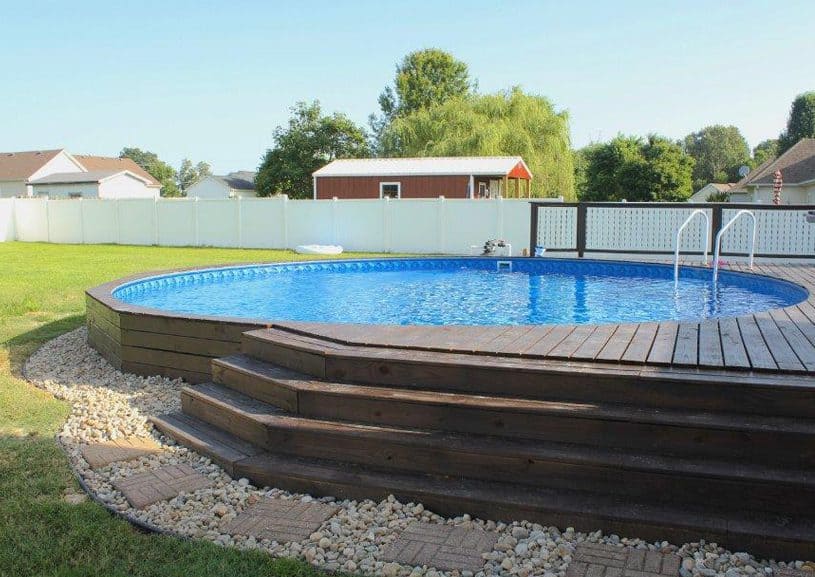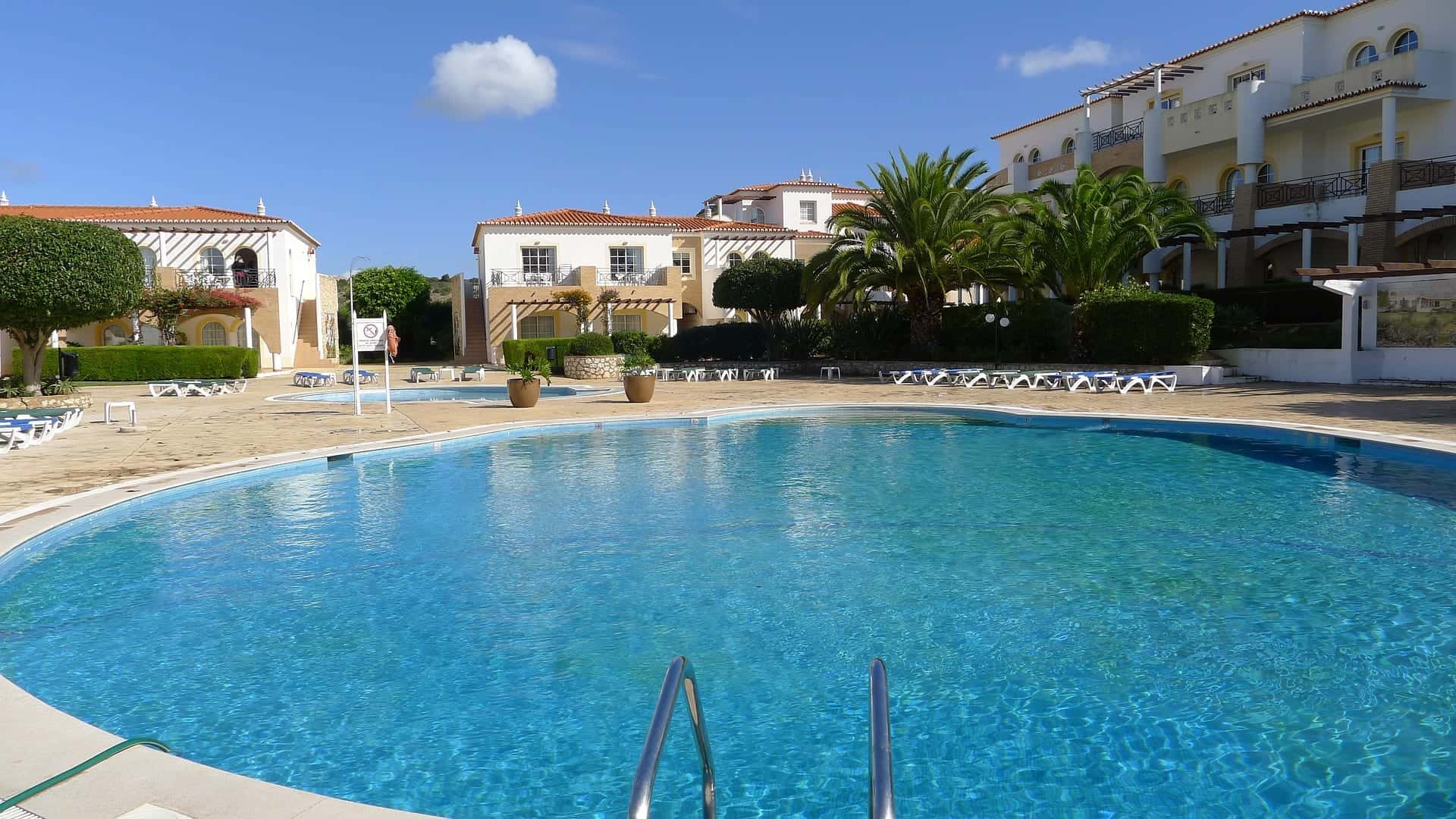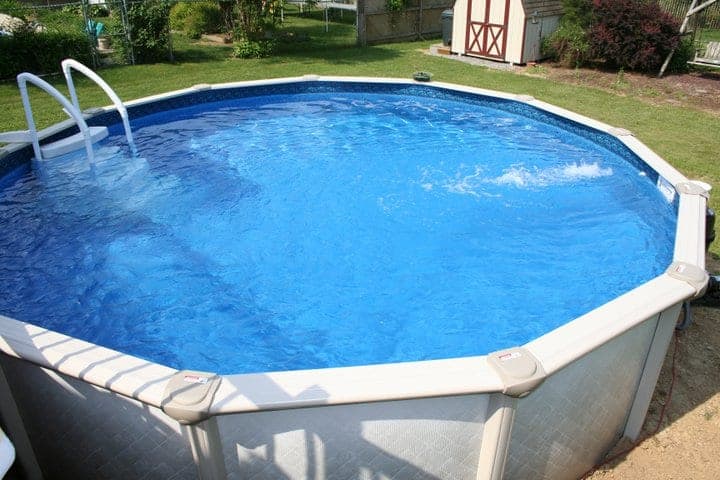You may or may not have heard of them, but there’s a new player in the pool industry. Semi-inground pools are quickly rising to become a popular choice for homeowners looking to add a pool to their backyard. But what is a semi-inground pool, and how do you know if it’s right for your household?
A semi-inground pool is a pool that is halfway between an above-ground and an inground pool. It offers a variety of landscaping options to mimic the look of an inground pool but is closer in price and function to an above-ground pool. Most semi-inground pools are a consistent depth throughout, and can be only partially sunken into the ground, or nearly entirely submerged. Semi-inground pools are a versatile choice for a variety of backyard types and situations.
There are a lot of factors to consider when thinking about purchasing a pool. If you’re still on the fence about what type of pool to get, take a look at our checklist of signs that a semi-inground pool is the right choice for you.
1. You want something nice, but you don’t want to break the bank
Cost and your family’s budget are probably the most important factors when shopping for a pool. You’ll need to determine how much pool you can afford, and how much you can spend on installation costs.
Generally speaking, above-ground pools are the least expensive option, and inground pools are the most expensive. Semi-inground pools fall in the middle of the two and are a good option for the family that wants something a little nicer and a little more permanent than an above-ground pool but doesn’t have the money to spend on an inground pool.
These are fairly general numbers and not a full price estimate, but you can expect the following types of pools to fall between these ranges:
- Above-ground pool – Between $1,000 and $6,000
- Semi-inground pool – Between $8,000 and $23,000
- Inground pool – $35,000 and up
2. You have a yard with uneven or difficult terrain
Inground pools require digging deep into fairly soft, even ground over a large area. Some yards are perfect for this, but others not so much. Slopes, rocky terrain, and other environmental factors may make your backyard inhospitable to an inground pool.
Semi-inground pools can be built to work with the natural slope of a yard, seeing as only some of the pool is submerged into the ground. With minimal digging and landscaping, you can have a semi-inground pool installed to be flush with the higher elevation portion of your backyard. Then as the pool stretches across the yard, there are a variety of decorative options to dress up the wall of the pool as the yard slopes downward.
As with traditional above-ground pools, you can also have decking installed along your semi-inground pool. Some decking and landscaping options are so seamless, it may even look as if you have an inground pool from a distance. Certain brands of semi-inground pools, such as Stealth, are known for blending into your landscape.
3. You want something that lasts
In comparison to a traditional above-ground pool, semi-inground pools are much stronger and last longer. With an above-ground pool, the freestanding nature of the structure means that the water pressure inside the pool is what keeps the walls sturdy. But too much force or pressure and those walls can crumble or fracture, and you have a costly repair on your hands.
Semi-inground pools, due to their partially submerged nature, need stronger walls to withstand the pressure and shifting of the earth around them. Semi-inground pool walls are fully insulated and several inches thick. Many are constructed out of steel, and often come with extended warranties to protect against damage, depending on the brand. Because of this, these pools are permanent structures, rather than the semi-permanent type of an above-ground pool.
A middle-of-the-road semi-inground pool will usually last somewhere between 10 and 20 years, with higher-end models easily lasting in the 30-to-40-year range. Either way you go, a semi-inground pool will be a fixture of your family’s summer entertainment for years to come.
4. You don’t want a lengthy installation process
Inground pools may look nice, but in addition to their cost, they can take a long time to install. Depending on the materials and how it’s installed, an inground pool can take several weeks from the time the technicians excavate your yard until you’re able to swim.
This isn’t the case with a semi-inground pool. While it is true that unlike above-ground pools, it takes more than a single day to install a semi-inground pool, the installation process is not nearly the intensive time commitment that it is for an inground pool. From start to finish, a semi-inground pool usually takes around 3-5 business days to complete the installation. Sometimes, however, a bit more time is needed to finish landscaping and finishing touches. But you can be swimming in as little as a week with a semi-inground installation, which leaves you more time to enjoy your pool.
Let Cincinnati Pool and Patio Help You Choose Your Semi-Inground Pool
There are more things to consider when choosing the type of pool that’s right for your family, but if these four statements are true for you, a semi-inground pool might be your best choice. Cincinnati Pool and Patio offers a variety of pool installations, and we carry several brands of semi-inground pools that will be right at home in your backyard.
The pool season for this year may be almost over, but it’s never too early to start planning an installation for next season. If you’d like to know more about adding a semi-inground pool with Cincinnati Pool and Patio, get in touch with us for a consultation. We can go over the entire installation process with you, so when the time comes, you’ll know what to expect. And in no time you’ll be enjoying your very own semi-inground pool.










